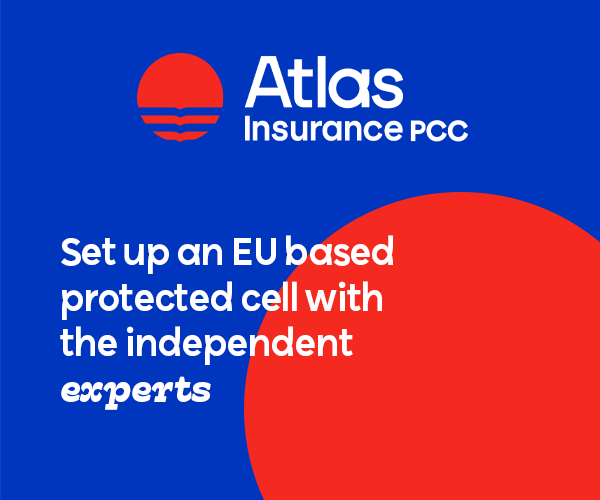Captives.Insure
Captives.Insure’s Joe McDonald and Luke Renz discuss how human dynamics shape successful captive insurance programmes beyond financial metrics
Beyond financial metrics, which human factors have you observed as most influential when organisations are evaluating captive solutions, and how do these factors impact the ultimate success of a captive programme?
Joe McDonald: In my experience, several human factors play a pivotal role when organisations evaluate captive solutions. The most influential include the organisation’s risk tolerance, the overall sophistication of the business, and a clear understanding of their own risk profile compared to peers and the broader market. Additionally, companies that have a strong grasp of their historical losses — why they occurred and how they might be mitigated — are better positioned to make informed decisions. A corporate culture that prioritises comprehensive risk management and integrates it into the company’s vision and objectives is also crucial.
Organisations that embed risk management into their culture tend to keep losses low and view risk management as an ongoing, iterative process rather than a one-off arrangement. This continuous review and adaptation enables them to respond effectively to changes in their risk profile or market conditions, ensuring that the captive remains a valuable and resilient tool for managing risk over time.
How does a client’s previous experience with traditional insurance influence their approach to captive solutions and which techniques have you found effective in helping them navigate this transition?
Luke Renz: A client’s history with traditional insurance significantly influences their openness to captive solutions. Clients who have maintained strong loss histories yet continue to face unfavourable terms or rate increases in the standard market often become motivated to explore alternatives that allow them to regain control over their insurance spend. On the other hand, organisations with ongoing operational issues and poor claims performance are typically not suitable candidates for captive structures.
To help clients navigate the transition, I focus on education and transparency. I walk them through the differences between traditional and captive arrangements, highlighting how captives can align with their risk appetite and financial goals. By sharing real-world examples and providing clear, step-by-step guidance, I help clients understand the responsibilities and potential rewards of captive ownership, ensuring they make informed decisions as they move away from conventional insurance solutions.
Having observed the captive industry from different perspectives, which human elements create the strongest foundation for effective collaboration between regulators, service providers, and captive owners?
McDonald: Effective collaboration in the captive insurance space is built on a foundation of open communication, mutual trust, shared ownership, and alignment of goals and values. The most successful regulators appreciate the pressures and responsibilities faced by service providers and understand the objectives of captive owners.
Service providers, in turn, must be well versed in regulatory requirements and able to facilitate meaningful dialogue between all parties, offering expert guidance and acting as liaisons to ensure smooth operations.
Captive owners who actively engage in the process and communicate how their captive supports the parent company’s broader objectives contribute significantly to the success of these relationships. Ultimately, it is this combination of transparency, respect, and shared purpose that enables all stakeholders to work together effectively.
Which indicators have you found most reliable in identifying clients who are truly ready for the captive commitment versus those who might struggle with transitioning from traditional insurance arrangements?
Renz: The most reliable indicators of captive readiness are a client’s risk tolerance, financial strength and proven record in managing risk.
High‑performing insureds with robust balance sheets and a willingness to assume greater risk are typically strong candidates. I also look for clients who have gradually increased their risk retention over time — such as moving to higher deductibles, retrospective rating plans or limited self‑insurance — before considering a captive.
These clients usually possess a strategic mindset and are motivated to maximise control and premium retention. On the other hand, clients who remain heavily reliant on guaranteed‑cost programmes, or who have not demonstrated a proactive approach to risk management, may struggle with the transition to a captive structure.
What role does transparency play in building credibility in the captive insurance space, and how can industry professionals better establish trust when guiding clients through significant risk management decisions?
McDonald: Transparency is fundamental to establishing credibility in the captive insurance industry. Being open and honest fosters genuine trust, essential for any long‑term professional relationship; without it, trust cannot develop and credibility quickly erodes. Transparency also underpins a culture of ownership, where successes and failures alike are acknowledged and addressed openly. For industry professionals, building trust means clearly communicating the realities of risk, ensuring clients grasp both the opportunities and challenges of captive ownership, and always tackling underlying issues rather than surface symptoms. By prioritising transparency in every interaction, professionals can sustain credibility and guide clients through complex risk‑management decisions with confidence.
In what ways do interpersonal dynamics between key decision-makers impact captive insurance formations, and how can consultants effectively navigate these relationship aspects?
Renz: Interpersonal dynamics among decision‑makers can significantly influence the formation and success of a captive insurance programme. Trust, clear communication and aligned interests are critical to managing expectations and building consensus throughout the process. As a consultant, I prioritise active listening and transparent dialogue to ensure that all parties’ perspectives are understood and addressed.
By fostering an environment in which stakeholders feel heard and informed, I help bridge gaps, clarify misunderstandings and align everyone towards the shared goal of a successful captive structure. Clearly communicating the structure, risks and benefits of the captive arrangement is essential for securing buy‑in and ensuring a smooth formation process.
How do communication styles and expectations differ among stakeholders in the captive space and which approaches have you found most effective in creating alignment during complex formations?
McDonald: Stakeholders in the captive insurance sector often have diverse communication styles and expectations, yet alignment is best achieved through clear, concise and consistent dialogue. I find it most effective to set expectations and establish clear goals at the outset of the captive project. By presenting options thoughtfully and encouraging prompt decision‑making, I help ensure all parties remain focused and engaged. While individual preferences may differ, a structured approach to communication — combined with a commitment to transparency — keeps complex formations on track.
As captives continue to gain popularity, how do you distinguish between clients making decisions based on industry trends versus those making choices aligned with their organisation’s specific risk management needs?
McDonald and Renz: Distinguishing clients driven by trends from those making decisions rooted in their unique risk profiles begins with understanding their rationale for forming a captive. Trend‑driven clients often lack detailed insight into their own loss history or risk specifics; their motivation is more about following market momentum or peer behaviour. In contrast, clients aligned with their organisation’s risk‑management needs typically demonstrate a clear, well‑articulated understanding of their exposures and how a captive can address those risks. They focus on solving real, pressing challenges — the risks that 'keep them up at night' — and view the captive as a strategic tool to manage those existential threats.
These clients usually have a firm grasp of their loss patterns, risk tolerance and long‑term objectives. They seek captives not just for cost savings but for control, transparency and stability in their insurance programmes. They recognise captives as a way to tailor cover to gaps or risks poorly served by traditional markets, such as emerging or hard‑to‑insure exposures. This deeper engagement often correlates with a commitment to proactive risk‑management and a culture that values sustained risk‑mitigation efforts. Ultimately, the difference is evident in the quality of their questions, the specificity of their goals and their readiness to commit resources and governance to the captive’s success.
How has the relationship between consultants and clients evolved as the captive market has matured, and which approaches to client engagement do you find most effective in today’s environment?
McDonald and Renz: The relationship between consultants and clients in the captive insurance market has evolved markedly as the sector has matured. Early on, consultants mainly served as technical advisers, concentrating on feasibility studies and structuring captive programmes.
Today, the relationship is far more collaborative and strategic, mirroring the heightened sophistication of both clients and the market. Clients now expect consultants to act as true partners, guiding them not only through the mechanics of captive formation but also through ongoing risk management, regulatory changes and market disruptions.
Effective client engagement now centres on education, transparency and independent evaluation. Consultants are expected to demystify the captive model, clearly setting out both its benefits and responsibilities. This includes walking clients through the long‑term commitments of captive ownership, showing how captives can deliver control, flexibility and cost savings, and setting realistic expectations about potential outcomes. Independence is also crucial; consultants who prioritise the client’s best interests, rather than focusing on generating fees, are better able to build trust and credibility.
Personalised engagement is key. The most effective consultants tailor their approach to each client’s unique needs, risk profile and organisational culture. Regular communication, ongoing education and proactive support help clients adapt to changing conditions and maximise the value of their captive. As the market continues to grow and evolve, the consultant’s role as educator, advocate and strategic partner will only become more important, ensuring clients are empowered to make informed, resilient risk‑management decisions.
What role does effective storytelling play in helping clients connect with the concepts of risk financing, and how do you tailor these narratives for different organisational stakeholders?
McDonald and Renz: Effective storytelling is a powerful tool for bridging the gap between complex risk‑financing concepts and the diverse perspectives of organisational stakeholders. Not everyone processes information analytically; many relate better to narratives that illustrate real‑world examples and outcomes. By sharing stories of similar clients who have successfully adopted captive arrangements, we make abstract ideas tangible and relatable. These narratives help stakeholders visualise how captives can mitigate risks, improve financial outcomes and enhance control over insurance programmes.
Tailoring the story depends on the audience. For executive leadership, the focus is often on strategic benefits: how captives align with long‑term financial goals, improve predictability and create competitive advantages. For risk managers or operational leaders, stories emphasise practical risk mitigation, claims‑management improvements and operational control. For finance teams, narratives highlight cost savings, cash‑flow stability and investment opportunities. By customising the message to each group’s priorities and concerns, storytelling fosters engagement, builds trust and facilitates informed decision‑making. This approach transforms captive insurance from a technical concept into a compelling solution that resonates across the organisation.
How do you balance the comfort of quantitative analysis with the equally important qualitative aspects of captive insurance decisions when advising clients?
McDonald and Renz: Balancing quantitative and qualitative factors is essential when guiding clients through captive insurance decisions. Quantitative analysis provides the hard data — loss history, projected claims, premium comparisons, capital requirements and financial modelling — that form the basis for evaluating a captive’s feasibility and cost‑effectiveness. This data‑driven approach builds confidence by quantifying potential savings, risk‑retention levels and capital needs, offering a clear financial picture.
Yet qualitative aspects such as organisational culture, risk appetite, governance and strategic alignment are equally critical. A captive’s success depends on a client’s commitment to proactive risk management, transparency and long‑term thinking. These factors influence how well a captive is managed, how claims are handled and whether the captive can adapt to evolving risks.
In practice, we combine actuarial and financial modelling with interviews, risk assessments and operational reviews. This helps clients understand not only the numbers but also the operational and cultural readiness required.
Such a holistic approach ensures decisions are grounded not merely in financial metrics but also in the client’s ability and willingness to embrace the captive model as a strategic risk‑management tool. Ultimately, this balance fosters sustainable captive programmes that deliver both financial and organisational value.





